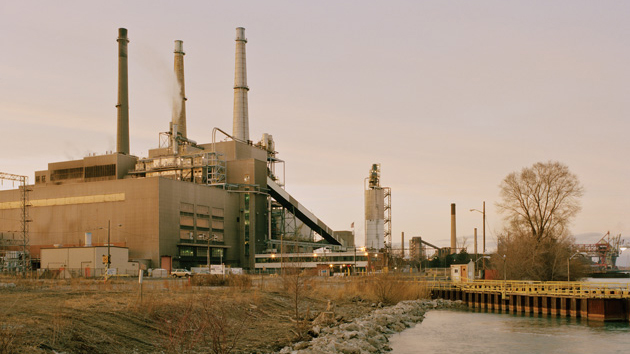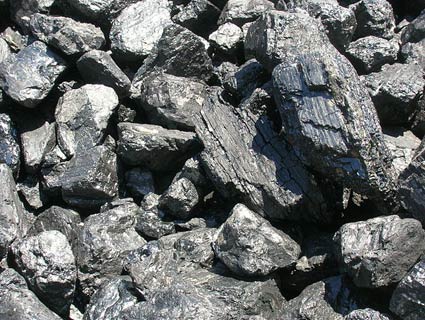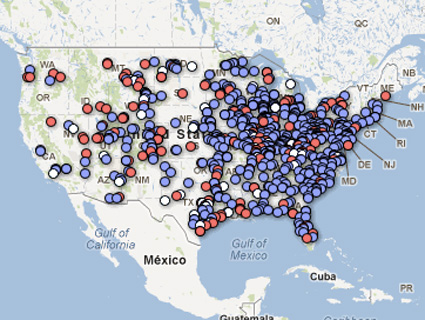| 1825 |
In Chautauqua County, New York, William Hart discovers natural gas reserves. Uses gas to light buildings in Fredonia; town’s official seal features five burners representing those lights. |
| 1940s |
Worried about German subs targeting tankers, government supports construction of oil pipelines from Texas to East Coast; after war, pipelines approved for gas transport as well. |
| 1950 |
Natural gas use begins steady climb, will nearly double over next two decades. |
| 1954 |
Federal government establishes price controls for interstate gas sales, making it more lucrative to sell in states where it’s produced. Shortages ensue across Midwest and East Coast. |
| 1970 |
Gas’ share of US energy consumption peaks at 30 percent (25 percent today). |
| Oct. 23, 1970 |
Streaking down Bonneville Salt Flats at 622 mph, gas-powered Blue Flame sets world land-speed record.
|
| 1976 |
Resource Conservation and Recovery Act passed to regulate hazardous waste; gas will be made exempt. |
| Jan. 20, 1977 |
Jimmy Carter inaugurated amid energy crisis, sets White House thermostat at 65, dons cardigan.
|
| Jan. 26, 1977 |
Facing record cold, Pennsylvania Gov. Milton Shapp orders schools closed for three days because of gas shortage. On the same day, Carter proposes Emergency Natural Gas Act, deregulating the industry. |
| 1979 |
In his book The Politics of Energy, influential environmentalist Barry Commoner introduces notion of gas as “bridging fuel” to greener future. |
| 1986 |
Congress passes Community Right to Know Act requiring companies to report toxic releases; pleading trade secrets for fracking fluids, gas drillers get exemption. |
| 1987 |
Gas industry granted exemption from Clean Water Act amendments designed to keep pollution out of storm water. |
| 1990 |
Gas drillers given de facto exemption from Clean Air Act. |
| July 25, 1991 |
International Gas Union releases report declaring that gas is “trump card” in the fight against destruction of the environment. |
| Nov. 4, 1991 |
Automotive News touts gas as “cheap, plentiful, patriotic” solution for motor vehicles. |
| May 21, 1992 |
President George H.W. Bush’s EPA chief, Bill Reilly, meets with industry execs including Enron CEO Ken Lay, praises gas’ “relative environmental cleanliness.” |
| 1993 |
Ford develops natural-gas-powered Crown Victoria that ends up in cab fleets in NYC, LA, and other cities. Project partially funded by gas industry. |
| Dec. 20, 2000 |
President-elect George W. Bush: “Natural gas is hemispheric. I like to call it hemispheric in nature because it is a product that we can find in our own neighborhoods.” |
| Jan. 2001 |
Shortly after taking office, VP Dick Cheney (previously CEO of oil and gas firm Halliburton) forms energy task force. Its report incorporates much of gas industry’s lobbying wish list, including drilling in Arctic National Wildlife Refuge.
|
| 2005 |
Cheney-backed energy bill contains “Halliburton loophole,” which exempts frackers from the Safe Drinking Water Act. |
| 2007 |
Sierra Club director Carl Pope chooses to accept funding for Beyond Coal campaign from natural gas company Chesapeake Energy, does not tell his board or members. Chesapeake will give club more than $25 million over three years. |
| 2008 |
Researchers release estimate that there’s up to 250 times more gas in Marcellus Shale formation, which runs from New York to West Virginia, than previously thought. |
| July 8, 2008 |
Oil tycoon T. Boone Pickens unveils “Pickens Plan” to reduce dependence on foreign oil by massively increasing gas drilling. |
| July 19, 2009 |
Robert F. Kennedy Jr. writes in Financial Times that US is “awash with natural gas,” which “has made it possible to eliminate most of our dependence on deadly, destructive coal.” |
| Aug. 2009 |
Former Sen. Timothy Wirth and John Podesta of the Center for American Progress call gas “a bridge fuel to a 21st-century energy economy.” |
| Nov. 2009 |
New York officials test fracking wastewater, find it’s radioactive. |
| Jan. 24, 2010 |
Documentary Gasland premieres, introduces America to flaming tap water. Nominated for 2011 Academy Award.
|
| Feb. 2010 |
Congressional investigation reveals fracking companies are injecting diesel fuel and other toxic chemicals underground. |
| July 28, 2010 |
Senate Democrats seek to compel disclosure of chemicals in fracking fluid. Bill fails. |
| Sept. 2010 |
Obama EPA asks frackers for information about fluids. Only Halliburton refuses. |
| Sept. 9, 2010 |
Natural gas pipeline explodes in San Bruno, California, killing eight. |
| Jan. 25, 2011 |
In State of the Union, Obama rolls out clean energy plan that includes major expansion in natural gas. |
| March 2011 |
Study in journal Climatic Change suggests cumulative greenhouse impact of natural gas may be at least 20 percent higher than coal’s because of methane leakage from wells.
|
| Aug. 2011 |
US Geological Survey reduces estimate of undiscovered gas in Marcellus Shale by 80 percent. |
| Oct. 2011 |
RFK retracts support for gas, credits New York Times reporting for alerting him to risks. |
| Nov. 2011 |
EPA moves toward regulating toxic fracking discharges; industry pushes back. |
| Jan. 2012 |
Geologists link fracking to earthquakes in Ohio and Oklahoma. |
| Jan. 2012 |
Cornell University veterinarian publishes study on cats, dogs, horses, and cows having seizures and dying after exposure to fracking chemicals. |
| March 15, 2012 |
Actor Mark Ruffalo, a.k.a. the Hulk, launches Water Defense to oppose fracking, mountaintop removal, and other “destructive fossil fuel practices.”
|


















